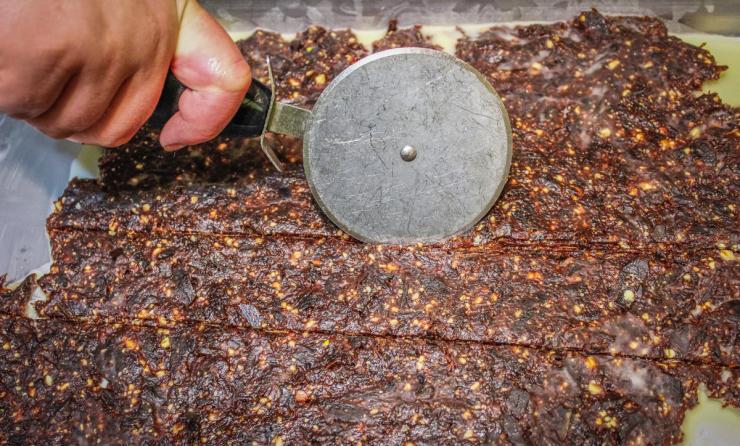Dried meat, fat, and sometimes berries make pemmican, a high-energy snack. The Cree, Ojibwe, and Blackfoot have traditionally used it. Pemmican is good for hunters, travelers, and others in harsh conditions because of its long shelf life and high nutritional value.
Pemmican history
Pemmican may have been invented 400 years ago by Indigenous peoples in the North American plains. Pemmican comes from “made grease” in Cree. Pemmican was a nourishing, portable diet for the Cree and other Indigenous peoples during lengthy treks, hunting excursions, and food shortages.
Pemmican.
Native Americans relied on pemmican, especially in winter when fresh food was scarce. Due to its portability and shelf life, it was traded. European explorers and traders like the Hudson’s Bay Company immediately realized the pemmican’s significance and traded with Indigenous peoples.
Hikers, campers, and Indigenous peoples still eat pemmican. Ketogenic diets employ it.
Pemmican-making
Lean bison, deer, or elk slices are dried over a fire or in the sun to make pemmican. The dried meat is chopped up and combined with melted fat from the same animal. Dried cranberries or blueberries offer flavor and nourishment. The mixture is carefully packed into animal skin bags or modern plastic bags and allowed to cool and solidify.
Pemmican is high in protein, fat, and calories, although recipes vary. Dried carrots or onions boost vitamin and mineral richness in some recipes.
Pemmican Longevity
Pemmican’s high-fat content preserves it. Pemmican can last years in a cold, dry environment. Indigenous peoples who needed to keep food long-term found it excellent.
Historic Pemmican Value
Pemmicans shaped North American history. Indigenous peoples and European explorers and traders relied on it for nourishment. The Canadian government banned pemmican exports in the mid-19th century to force Indigenous peoples to eat official food. Indigenous peoples and Métis fought the Canadian government for pemmican rights in the Métis Rebellion of 1869–70.
Certain Indigenous communities still manufacture and utilize pemmican. Hikers, campers, and other outdoor enthusiasts like it for its nutritional content and shelf life.
Finally, Indigenous peoples’ history and culture include pemmican. Its excellent nutritional value and long shelf life make it vital sustenance for long voyages, hunting excursions, and food scarcity. Outdoor enthusiasts love pemmican for its mobility, health benefits, and simplicity. Pemmican is a nutritious cuisine and a centuries-old Indigenous food preparation and preservation method.
A recipe for pemmican:
Ingredients:
2 pounds of lean meat (such as bison, deer, or elk)
1 pound fat (such as tallow, lard, or bacon fat)
1 cup dried berries (such as cranberries or blueberries)
Instructions:
Slice the meat into thin strips and lay them out in a single layer on a wire rack or in a dehydrator. Dry the meat until it is hard and brittle, which usually takes about 8-12 hours.
Grind the dried meat into a fine powder using a food processor or coffee grinder. Place the powder into a large bowl.
Melt the fat in a pot over low heat until it is fully melted. Add the dried berries to the pot and stir.
Pour the fat and berry mixture over the ground meat in the bowl. Mix well to ensure that the meat is fully coated.
Press the mixture tightly into a container, such as a plastic bag or animal skin pouch. Seal the container and let it cool.
Once the mixture has cooled and solidified, cut it into small pieces or bars for easy consumption.
Pemmican can be stored in a cool, dry place for several months to several years, depending on the storage conditions.
Note: This recipe can be adjusted to suit your taste preferences. For example, you can use different types of meat, fat, or dried fruit, or add seasonings such as salt, pepper, or garlic powder.

